Development tools come in various forms, such as compilers, linkers, assemblers, debuggers, and performance analysis tools. Using the right tool can significantly boost your productivity and streamline your project’s workflow.
One of the most basic programming software is the source code editor, which is used ubiquitously and continuously. It is a text editor program designed for writing and editing programming code.
Code editors can exist as standalone applications, be integrated into web browsers, or come as part of integrated development environments (IDEs). Since there are literally hundreds of Code Editors available in the market, it is difficult for developers to choose one.
To make this job easier, we have gathered a few of the best programming software that can speed up your coding process while offering plenty of useful features.
Whether you’re a beginner or a seasoned pro, this comprehensive list will introduce you to the top tools, elaborate on their features, and provide insights into their best use cases.
Table of Contents
14. Eclipse
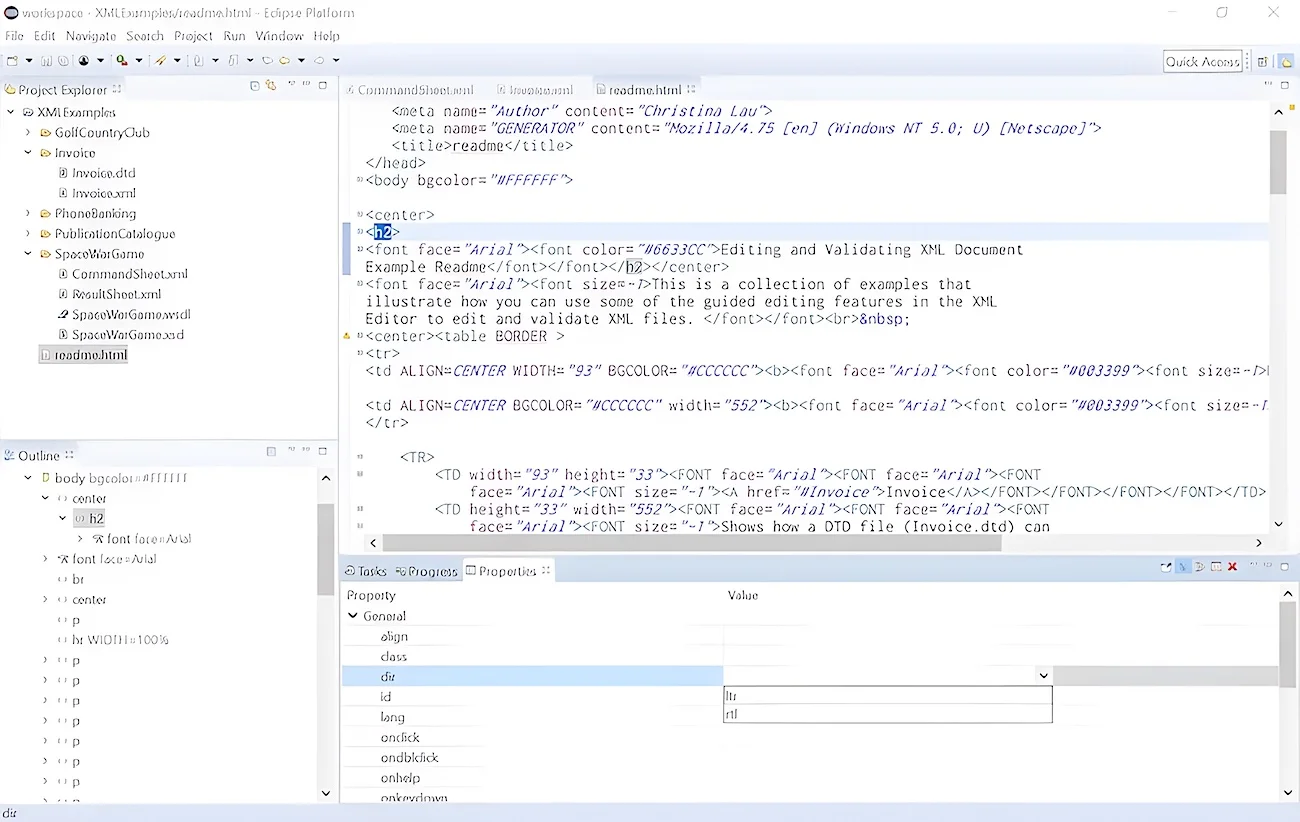
Price: Free
Platform: Linux, macOS, Windows
Eclipse is an IDE that supports an extensible plug-in system for customizing the environment. Although it is primarily used for developing Java applications, you can also write apps in other programming languages (via plug-ins).
It checks compile-time errors while writing the code. And since it provides suggestions and has a great online community to help users, you can increase your pace of coding with this tool.
Pros
- Great framework for building Java applications
- Includes plenty of debugging options
- Supports various build systems such as CMAKE
- Easy to get standard plugins from the marketplace
Cons
- It consumes a lot of RAM
- Sometimes, it crashes on loading big projects
Eclipse manages multiple files and projects efficiently and supports many file formats with type-specific syntax formatting. It provides connectors for multiple databases and supports common DB access methods. Moreover, project integration into GIT is virtually seamless.
13. Geany
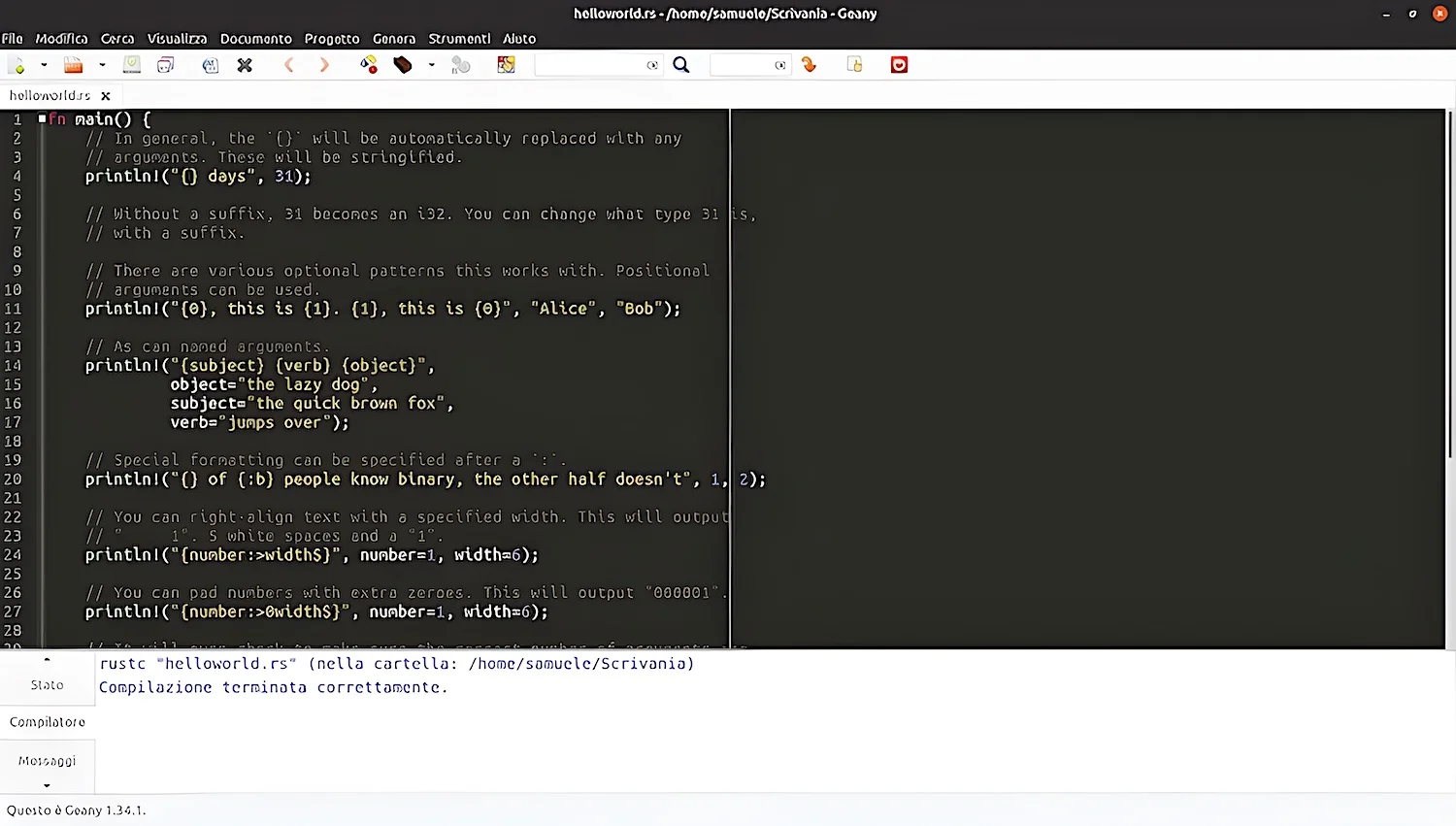
Price: Free
Platform: Linux, macOS, Windows
Geany is an open-source, lightweight text editor specifically designed to have short load times and limited dependencies on external libraries or separate packages.
It supports many programming and markup languages, including C, C#, C++, PHP, HTML, CSS, JavaScript, Python, Perl, Haskell, and Pascal. Common filetypes like Diff-output, SQL, and ini-style config files are also supported.
Pros
- Lightweight and fast
- Comes with a built-in plugin manager
- Code completion and syntax highlighting
- Extensive file-type support
Cons
- Not as advanced as some other text editors
- Windows version doesn’t properly support 2-byte characters such as Japanese and Chinese
Unlike other code editors, you don’t have to search through numerous syntax styles just to be able to change the font.
What sets it apart is its Real Syntax Parsing, which goes beyond mere coloring. This means it can elegantly present inner classes and methods within your source code, offering a more insightful and seamless coding experience.
12. gedit
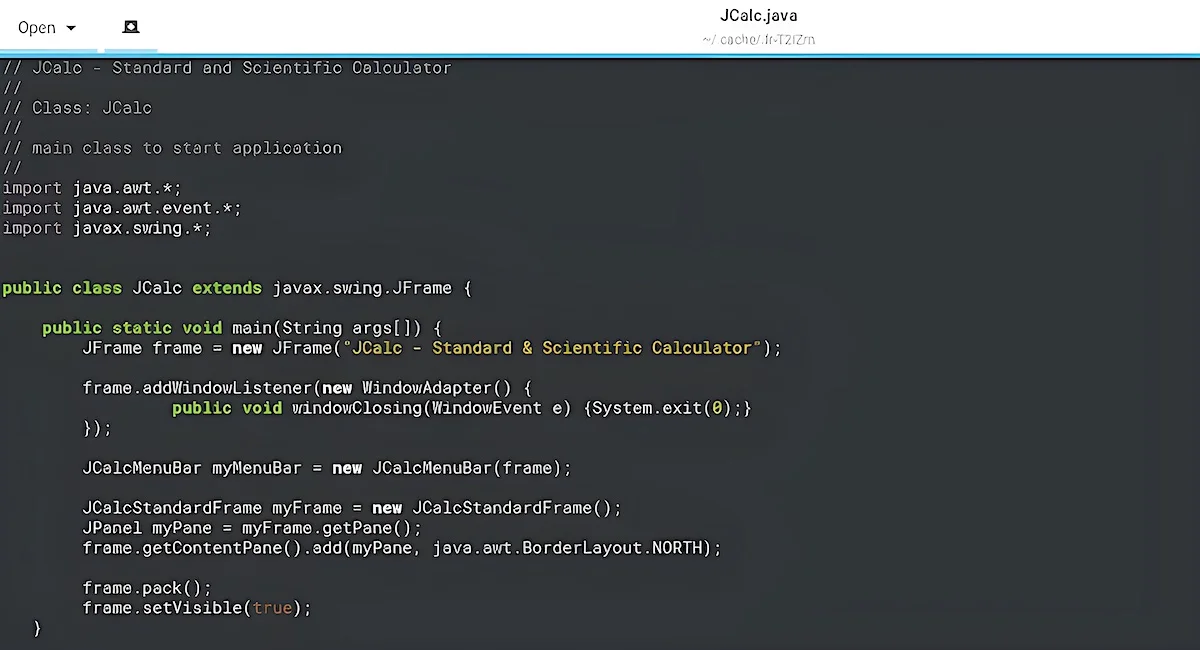
Price: Free
Platform: Linux, macOS, Windows
gedit is a lightweight yet powerful general-purpose text editor of the GNOME desktop environment. As per the philosophy of the GNOME project, it has a clean and simple GUI for editing source code and structured text like markup languages.
In addition to syntax highlighting for various programming languages, it also comes with spell-checking features and all other basic options like Goto line and find and replace.
Pros
- The UI is clean and minimal
- Customizable theme
- Multi-monitor editing and syntax highlighting
- Available on all systems that use Gnome
- Full support for internationalized text
Cons
- It misses many important features, including auto-complete for several languages
This tool operates swiftly, even on modestly powered PCs. It efficiently utilizes minimal memory and CPU resources, making it particularly adept at handling extensive log files without causing undue strain on your system.
11. Brackets
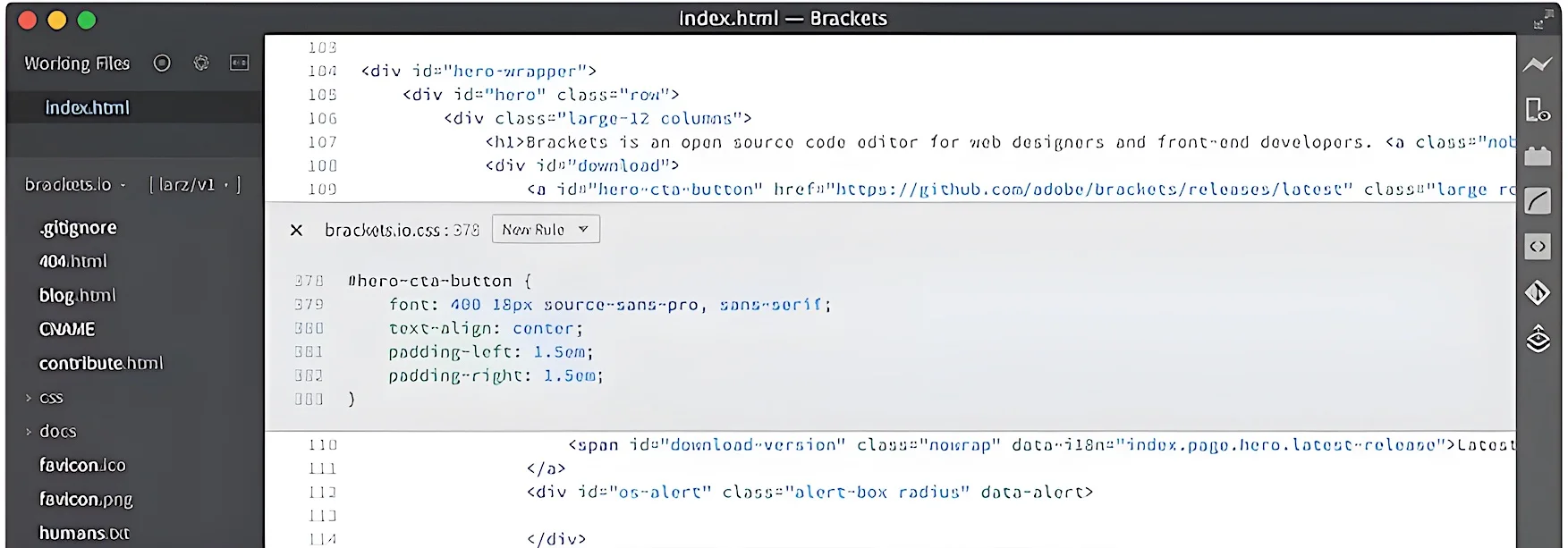
Price: Free
Platform: Linux, macOS, Windows
Brackets is an open-source code editor developed by Adobe Systems. It primarily focuses on HTML, CSS, and JavaScript editing functionality.
The Live Preview pushes your code edits instantly to the browser to display an updated webpage as you modify the code. Another useful feature called Split-Screen enables you to easily work on CSS and actual code at the same time.
Pros
- Live preview system
- Supports drag and drop
- Supports Adobe PSD content
- Vim-style editing is already built into the text editor
- It is being actively maintained and developed
Cons
- Lacks full-screen and split-screen support
- The shortcuts aren’t robust
Brackets has a decent library of extensions, such as “prefixed” that analyses your code and auto prefixes CSS selectors.
Although it may not be the largest player in the text editor arena, its wealth of customization options and the ability to expand its capabilities through plugins make the process of code implementation feel remarkably effortless.
10. NetBeans
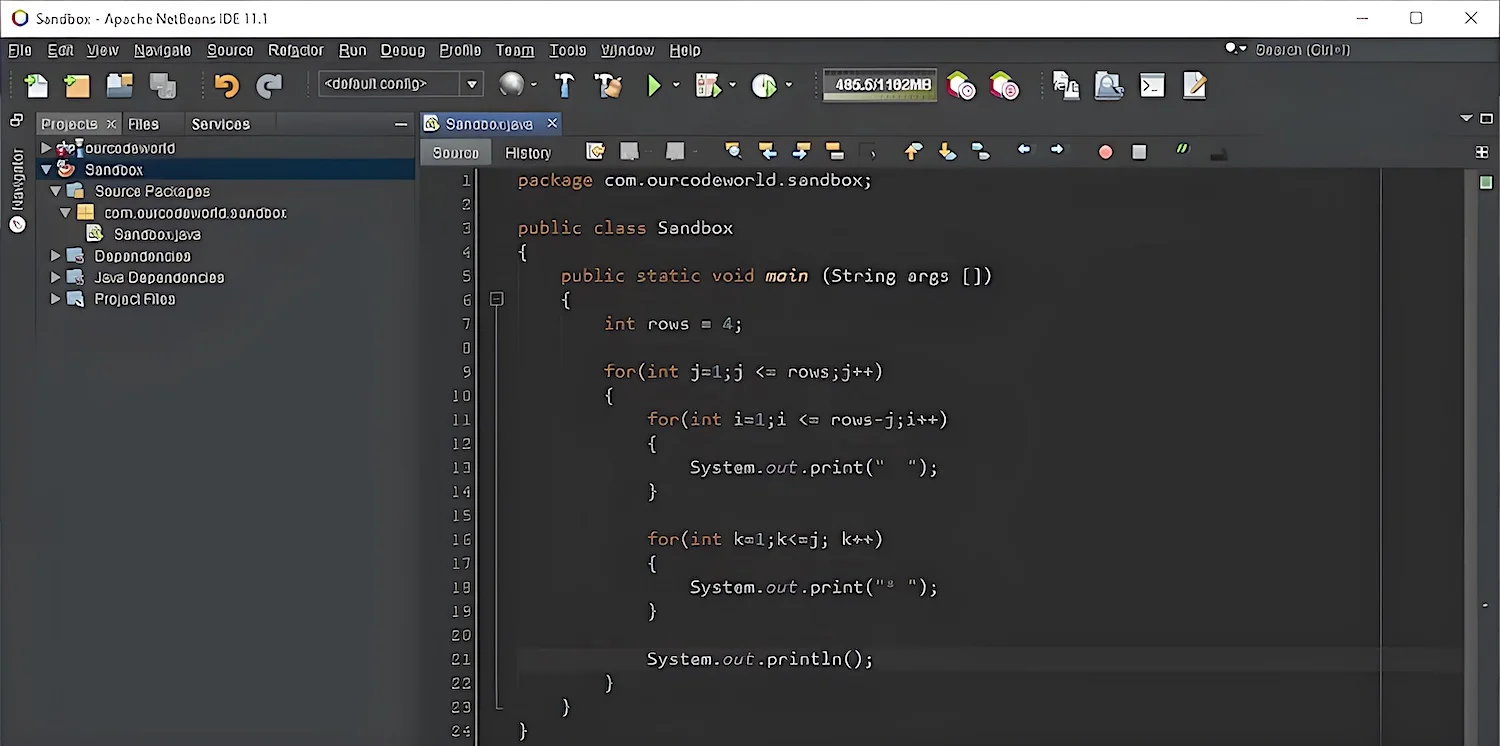
Price: Free
Platform: Linux, macOS, Windows
NetBeans is an open-source IDE that lets you quickly develop mobile, desktop, and web apps with Java, C/C++, PHP, and more. Applications are developed from a group of modular software components called ‘modules.’
Pros
- Easy to use and very efficient in code development
- Supports multiple programming languages
- Includes static analysis tool and batch code analyzer
- Perfect for creating test scripts for automation testing
Cons
- Consumes more RAM as compared to other IDEs
- Sometimes, it gets really slow when you compile and run programs
The tool doesn’t require any licensing and is quite easy to work on. You can indent code effortlessly: just define rules for the indentation of code in every language, and it will follow accordingly. You can also compare code across different files to know the differences between the code of different developers.
NetBeans integrates seamlessly with several web application servers, such as GlassFish and Tomcat. It also works well with version control tools like GIT.
9. Vim
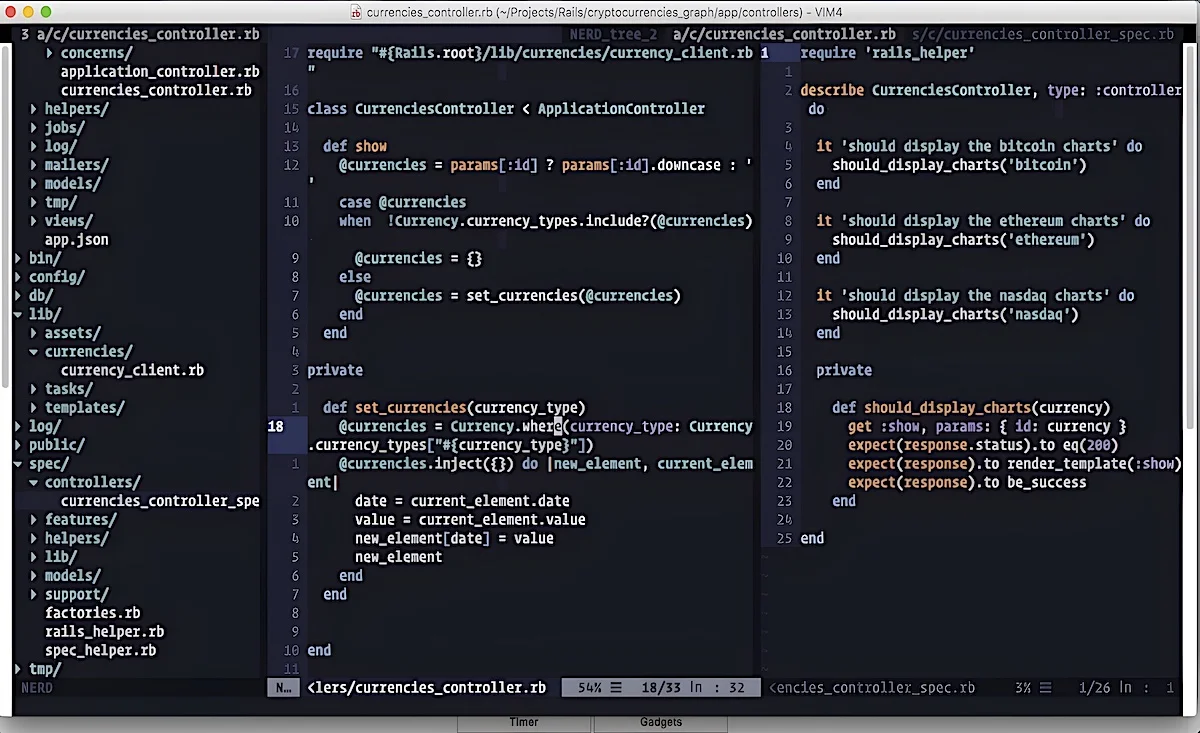
Price: Free
Platform: Unix, Linux, macOS, Windows
Vim is open-source software designed for use both from a command-line interface and as a standalone tool in a GUI. It is known for its speed and efficiency. It loads quickly and can handle large files with ease. This makes it suitable for a wide range of tasks, from simple text editing to programming.
It offers numerous features for text processing, including search and replace, regular expressions, and support for multiple buffers and windows. It also allows you to record and replay sequences of actions.
To optimize your visual experience, you can either change the size of the windows or split them horizontally/vertically. It has many commands to do typical things with the keyboard instead of the mouse. This increases your speed by at least two times.
Pros
- Works in terminal over SSH
- Includes multiple distinct editing modes
- Supports tons of plugins/add-ons
- Includes an interactive tutorial for beginners
Cons
- Steep learning curve
- UI looks outdated
The text editor is highly extensible. You can customize its behavior through plugins, scripts, and configuration files.
The Vim community actively develops and maintains a large library of plugins and scripts. These extensions can add functions for specific programming languages and version control systems, extending Vim’s capabilities.
8. TextMate
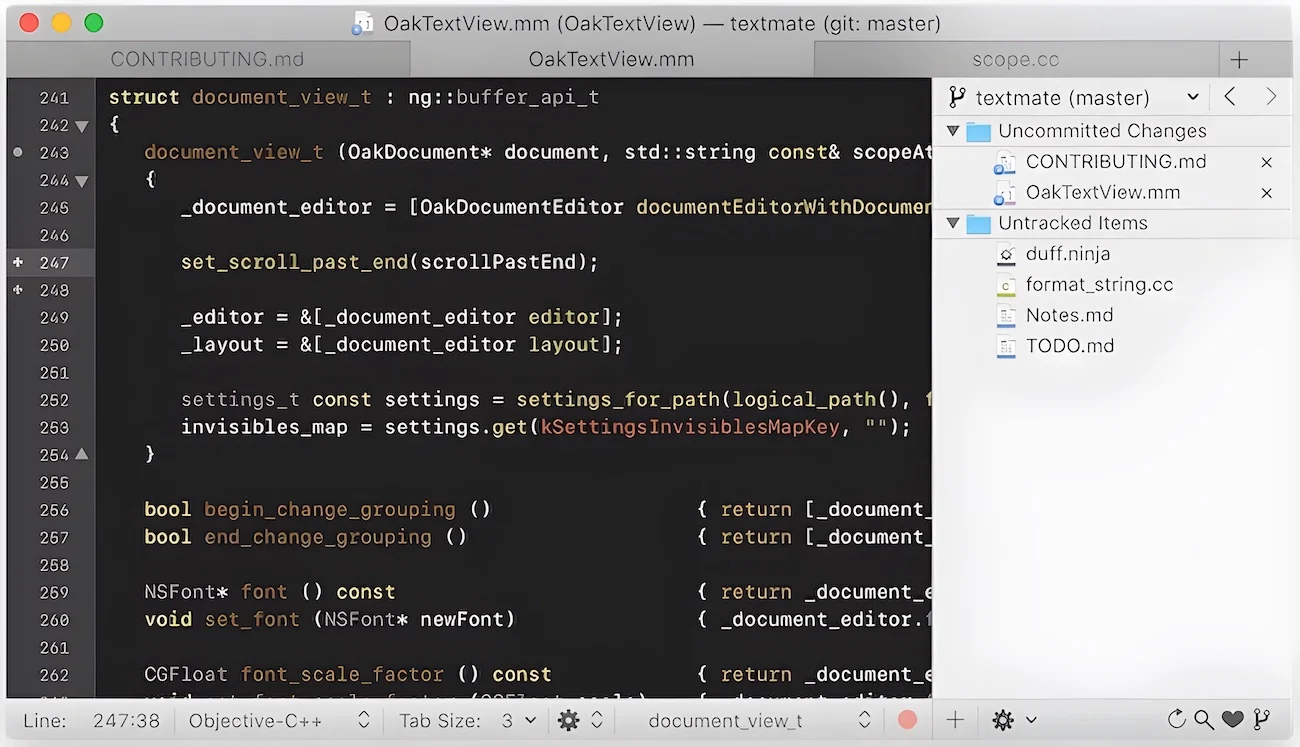
Price: Free
Platform: macOS
TextMate is a lightweight GUI text editor specifically designed for macOS. It features recordable macros, declarative customizations, folding sections, shell integration, and an extensive library of plugins.
Pros
- Its lightweight footprint makes it fast to load and use
- Features an extensive library of plugins
- Multi-line selection and editing
- Version control shows which files and lines have been changed recently
Cons
- UI Seems a bit outdated
It allows you to swap a piece of code and turn commonly used pieces of code into snippets with ease. Repetitive tasks can be eliminated with macros: either record a macro for immediate replay or save it for repeated use.
It’s very beginner-friendly, and formatting can be extremely helpful in writing and debugging code.
7. Emacs
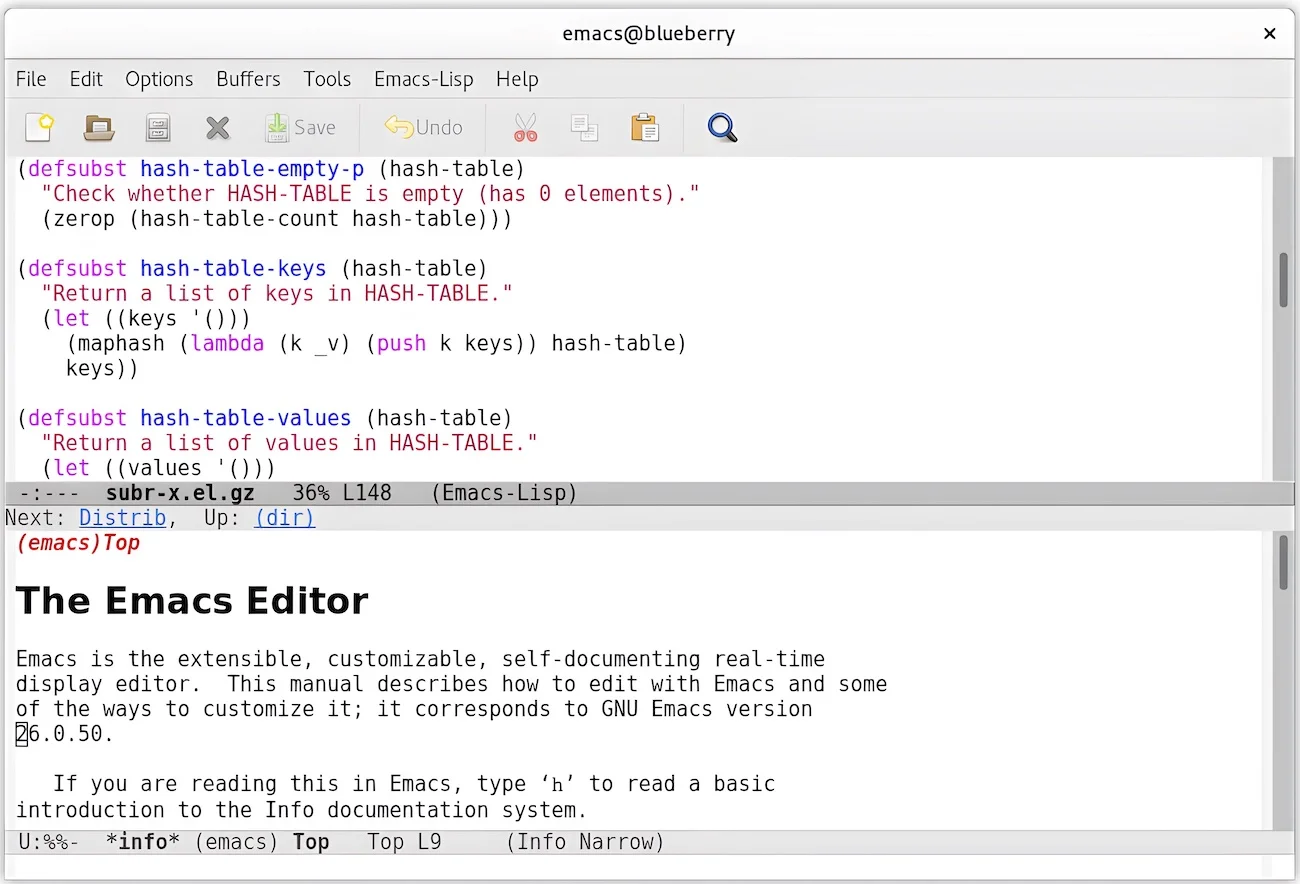
Price: Free
Platform: Linux, macOS, Windows
Emacs is a customizable and extensible text editor capable of achieving whatever the user wishes. It is packed with over 10,000 built-in commands, which can be combined with macros to automate work.
Pros
- Content-aware editing modes
- UI is highly customizable
- Comprehensive documentation, including tutorials for beginners
- Full Unicode support for almost all human scripts
Cons
- There is a bit of a learning curve at the beginning
- Shortcut key combinations seem odd
Emacs features content-aware editing modes, full Unicode support for almost all scripts, and a complete ecosystem. This ecosystem includes features like a news and mail reader, calendar integration, a versatile debugger interface, and a project planner.
This tool is extensible through Lisp extensions, so you can get all the new benefits of modern IDEs like syntax highlighting, code-complete, static checking, and more by installing plug-ins.
6. AWS Cloud9
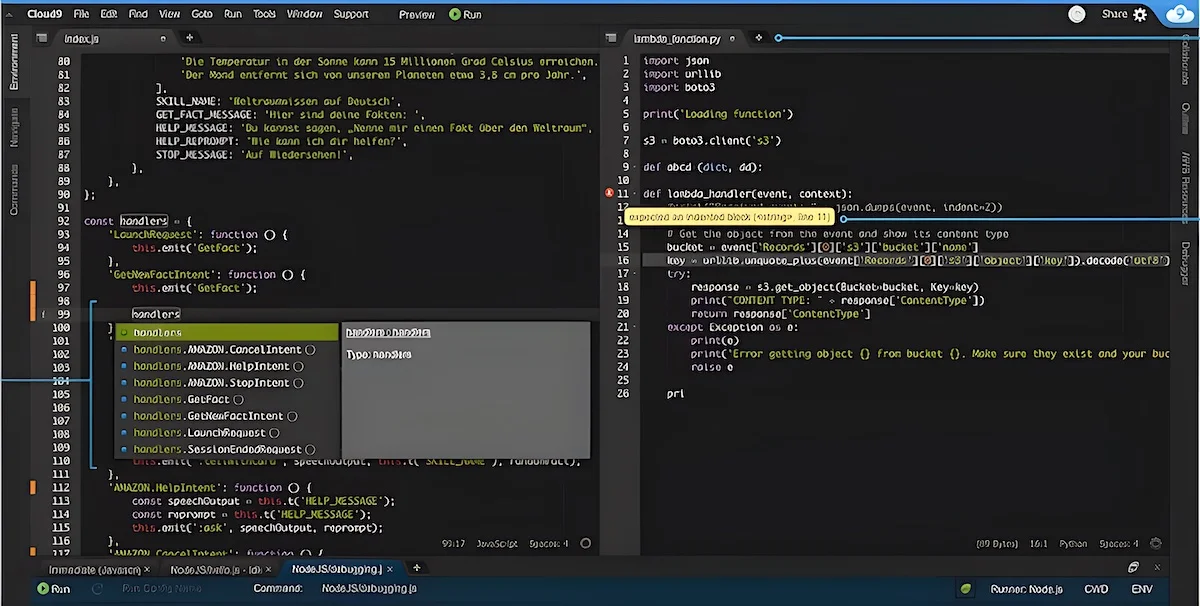
Price: Free | $2.05 for 90-hour usage
Platform: Online IDE
AWS Cloud9 lets you write, run, and debug source code using a web browser. You don’t need to install files or configure the development machine to start new projects.
It is packed with all the important tools required for popular programming languages.
The fully-featured editor comes with a built-in terminal and image editor, collaborative editing, and a chat tool so you can communicate with your team without leaving the IDE.
The platform lets you define resources, debug, and switch between remote and local execution of serverless apps. You can also share your projects, pair code, and track your team’s inputs in real time.
Pros
- Interface is very simple and easy to use
- Instantly run and maintain Lambda functions
- Share code with team members in real-time
- Integrates very well with other AWS tools
Cons
- Doesn’t contain shortcut keys
- Long setup process
And since it is an Amazon product, it is tightly integrated with other AWS services. This integration streamlines interactions with AWS resources, such as Lambda functions and EC2 instances.
5. IntelliJ IDEA
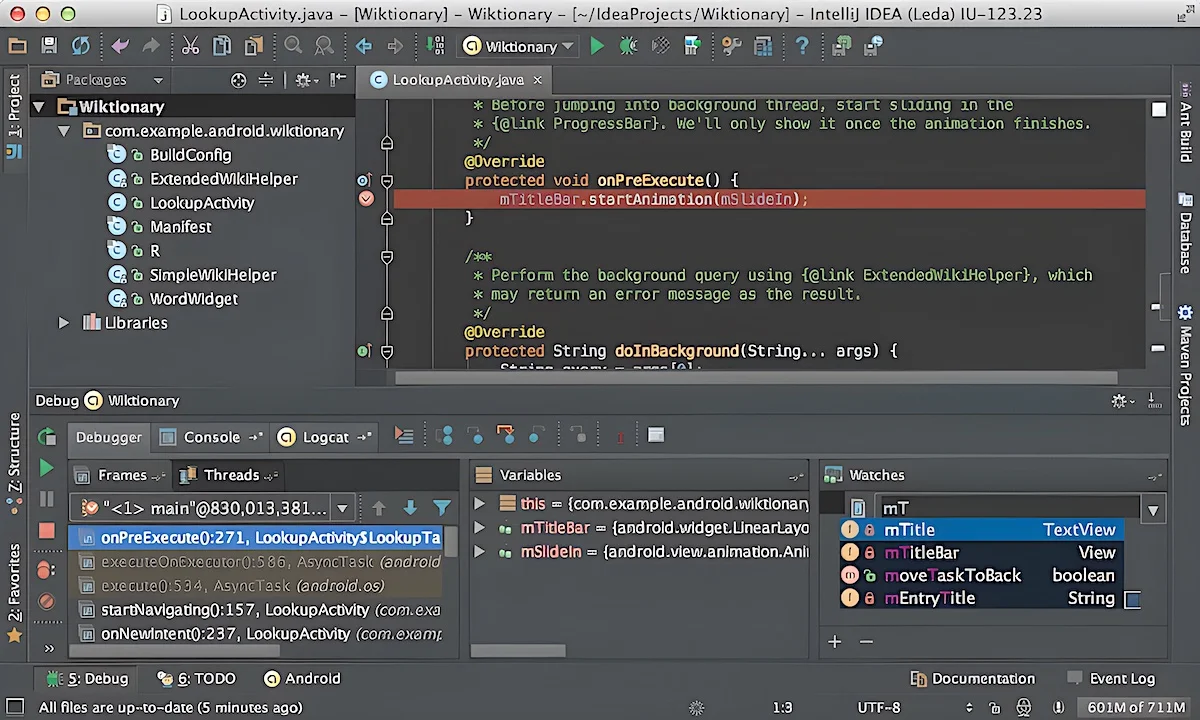
Price: Free | $49.9 per month
Platform: Linux, macOS, Windows
Written in Java, IntelliJ IDEA integrates hundreds of features and tweaks that make programming easier. Smart code completion for a large variety of languages, support for the microservices framework, and built-in developer tools such as version control and terminal make this tool special.
IntelliJ IDEA has established itself as one of the most versatile IDEs available, catering to a wide spectrum of development needs, from frontend JavaScript applications to backend Java projects.
Pros
- Great dark theme
- Auto suggestions/completion
- Plenty of configuration options
- Good code analyzer for evaluating code execution and error detection
- Seamless connectivity with third-party tools, such as Git
Cons
- Indexing process can sometimes take a long time
- Uses a significant amount of system resources
It is perfect for developers who have had experience with other JetBrains tools. For newbies, the user interface could be confusing as there are too many options and complex features.
4. Xcode
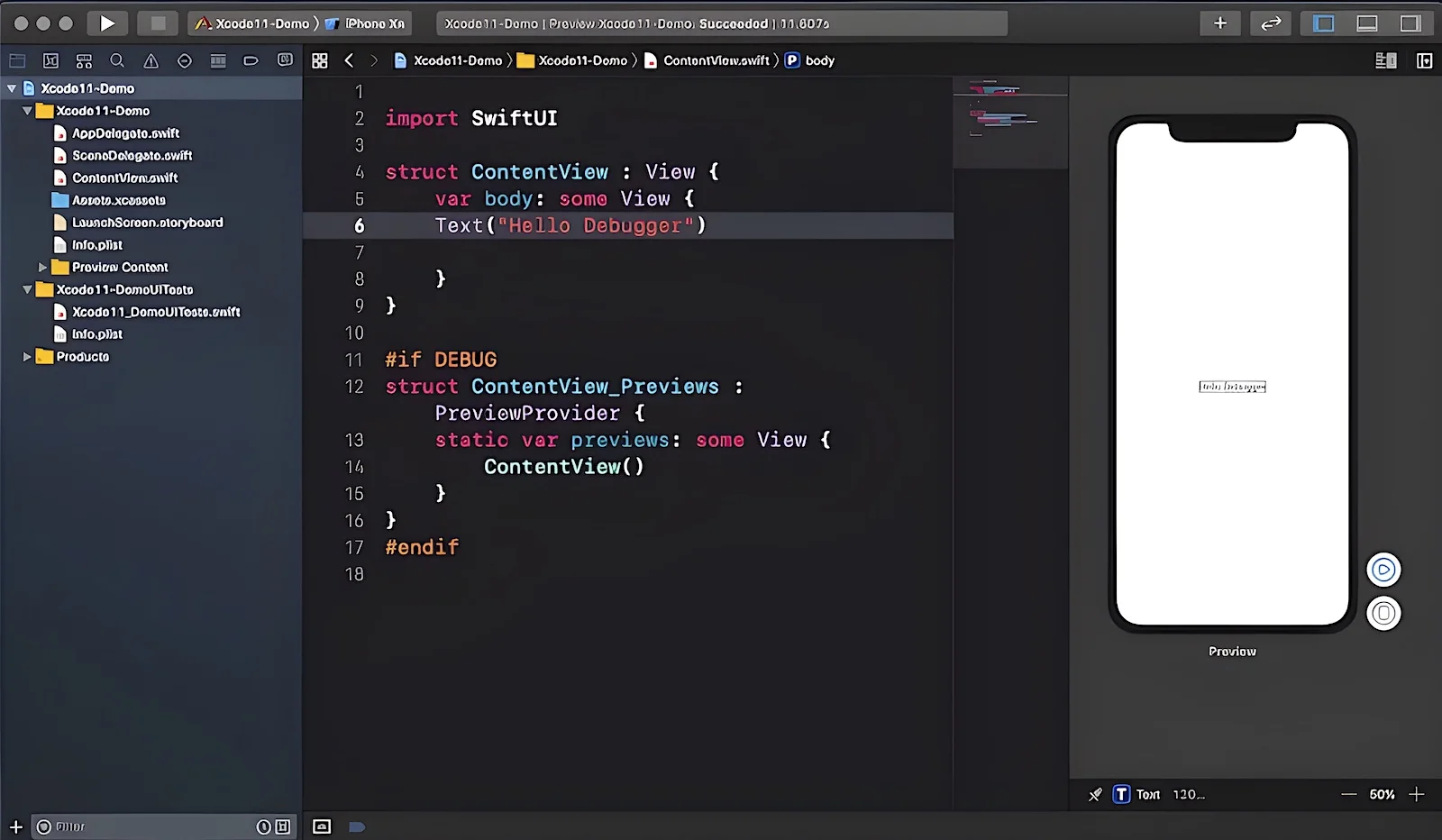
Price: Free
Platform: macOS
Xcode is a comprehensive suite of software development tools that encompasses a wealth of Apple’s developer documentation and features an integrated Interface Builder. It is used for developing software for iOS, iPadOS, macOS, watchOS, and tvOS.
Xcode and Swift (a multi-paradigm language developed by Apple Inc.) together make programming a delightfully live experience. The best thing about Xcode is you can just drag-drop the element, and your design is good to go.
Pros
- Alerts you when you make a coding mistake
- Version editor displays a running timeline of commits
- Easily search and find anything within the Documentation
- Server-side bots continuously build, analyze, test, and archive your projects
Cons
- Consumes a lot of system resources, especially when multiple projects are open
- Can’t handle anything non-native Apple-developed Swift
Its Interface Builder shows the live rendering of your code, instantly reflecting changes made in code. This dynamic rendering allows you to instantly visualize and verify the impact of your code modifications.
While Xcode is extensible and does support the installation of additional extensions and plugins, it’s worth noting that plugins may not be as crucial for this tool. Maintaining a seamless experience is often best achieved by simply keeping the IDE updated with the latest versions and enhancements.
3. Visual Studio
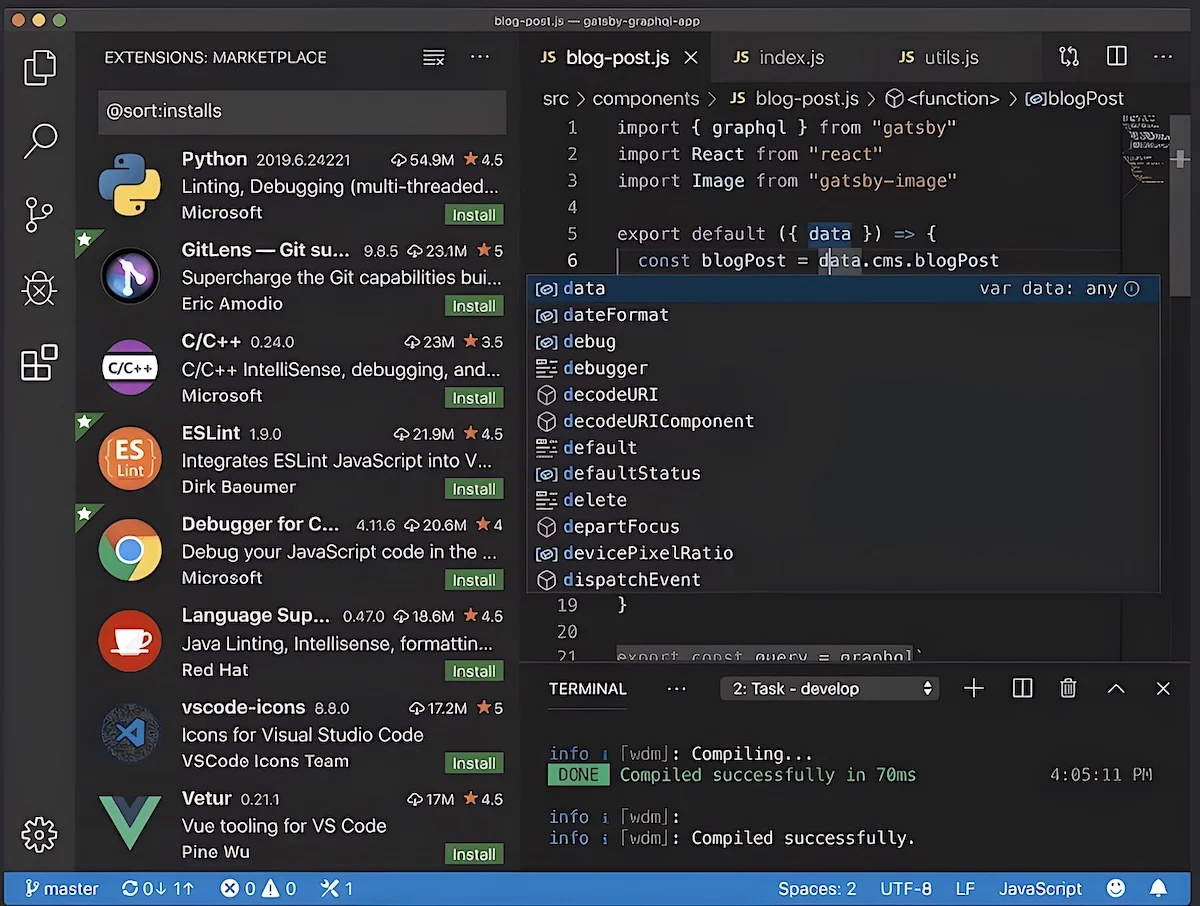
Price: Free | Paid version starts at $45.00 per month
Platform: Windows, macOS
Microsoft Visual Studio is a very powerful tool for creating websites, web services, and mobile applications. It is mostly used by small and midsize businesses to develop computer programs.
The code editor comes with IntelliSense (context-aware code completion feature), code refactoring, and an integrated debugger, which works as both a machine-level debugger and a source-level debugger.
It supports various programming languages (including C++, C#, F#, Python, Visual Basic, and JavaScript), which makes it a versatile tool for a range of application development.
Pros
- More than 20,000 extensions available
- Full stack web development
- Integration with Azure DevOps is excellent
- A strong community of users
- The tool is updated regularly
Cons
- High system configuration is necessary for smooth operation
- More expensive than other developing case tools
The online community support for this tool is outstanding, and Microsoft continuously keeps the product updated. The company offers a free Community edition of Visual Studio, which is suitable for individual developers, small teams, and open-source projects.
2. Sublime Text
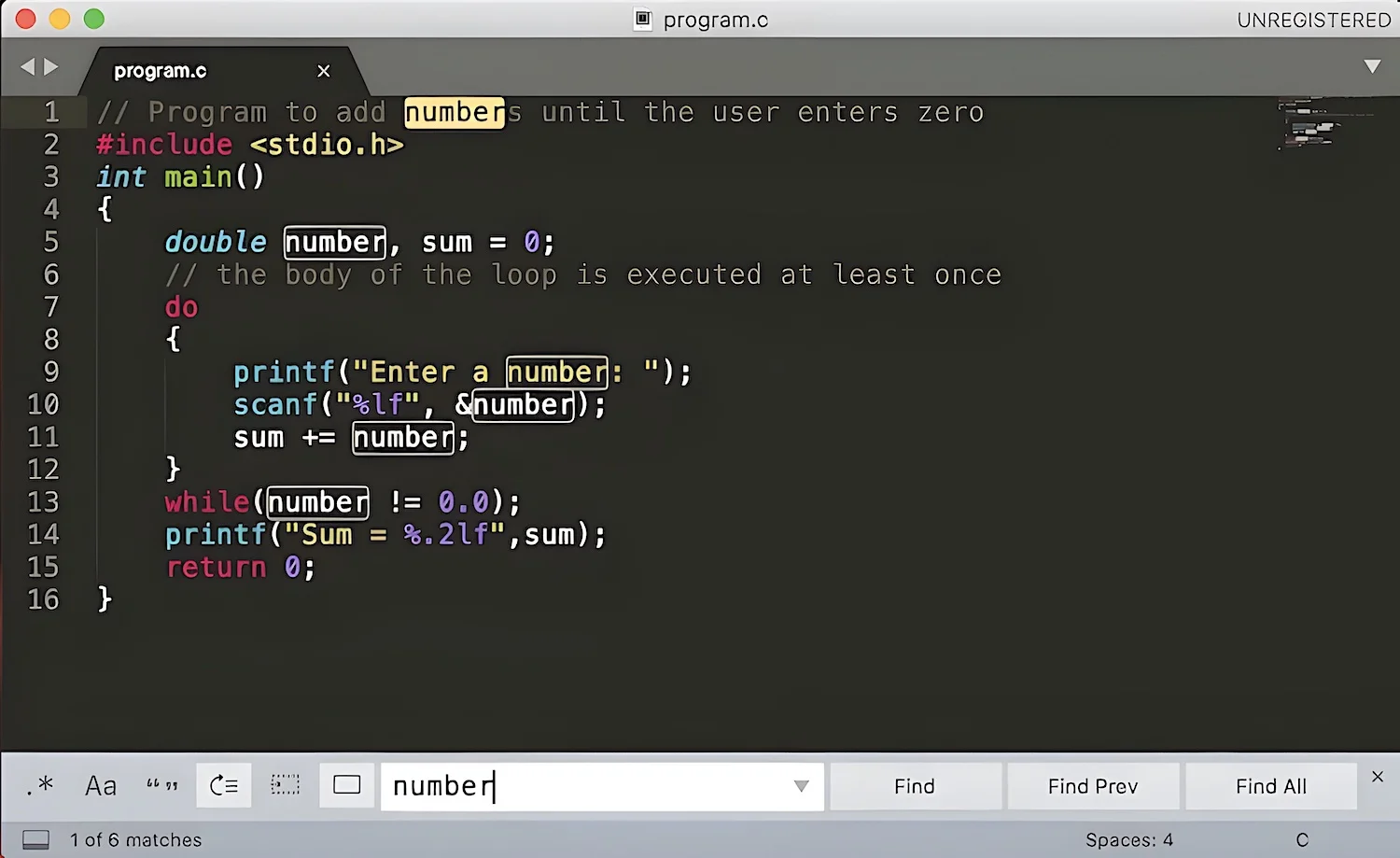
Price: Free | $80 per license
Platform: Linux, Windows, macOS
Sublime Text is a sophisticated text editor for prose, code, and markup. It has a minimap on the side that provides a hierarchical view of files and keyboard shortcuts for most actions.
It’s a lightweight software written in C/C++ and Python. It can do a lot more heavy lifting without running into issues. There is a decent command palette that allows for an in-depth utilization of the editor.
Pros
- Provides numerous preferences that suit all users’ needs
- Text highlights are great for debugging
- Accurate syntax suggestions
- Shortcuts and Macros improve efficiency
Cons
- Doesn’t autosave documents
- Often prompts to purchase a new version
Sublime Text allows users to customize every aspect of the tool and write code with speed and efficiency. It also makes it easier to link code to other pages of code.
In simple terms, it does a great job of what it is meant to be.
1. Notepad++
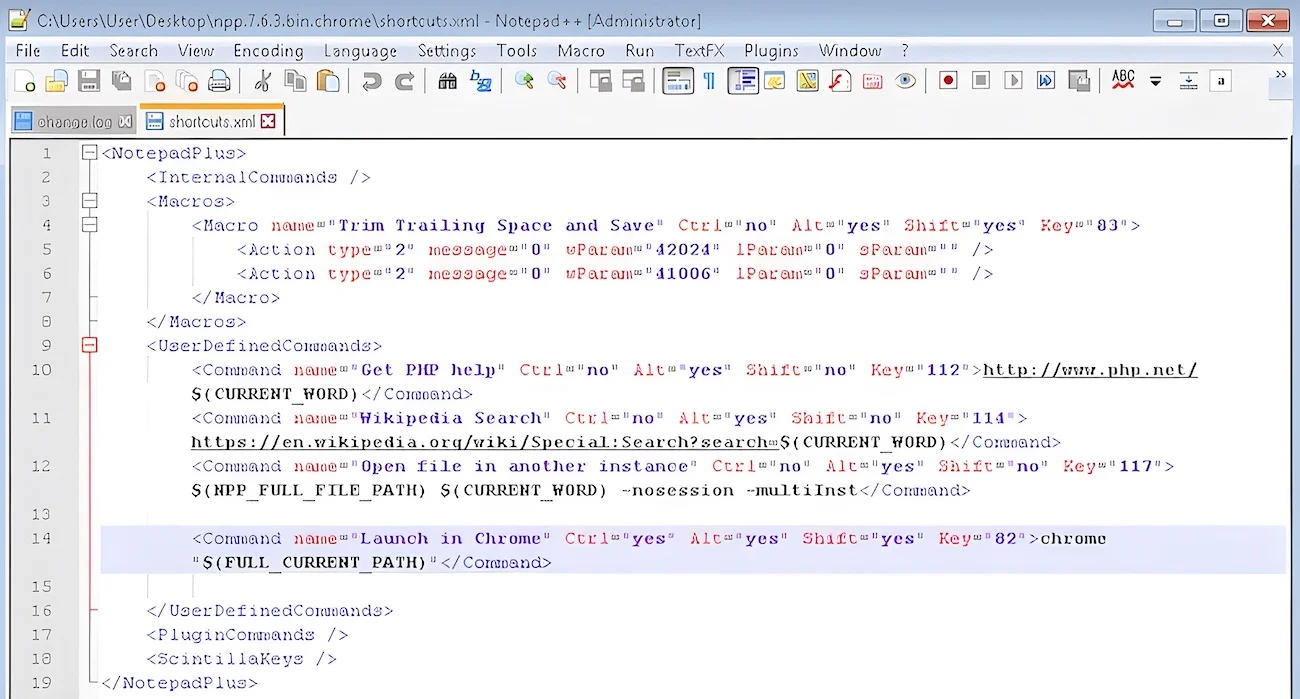
Price: Free
Platform: Windows
Notepad++ is more than an editor: it’s a Notepad replacement that supports many different programming languages. It is written in C++ and uses Win32 and STL, which ensures smaller program size and higher execution speed.
It’s an excellent sidekick for coding projects. You can work on several documents at the same time thanks to its multi-tab editing feature. The editor makes it easy to inspect files at all stages on embedded software projects, from HEX to C++ source.
Pros
- Easy file read and write access
- Supports more than 60 programming/scripting languages
- Saves the file automatically
- Search and replace multiple files in one go
Cons
- Sometimes, it hangs when dealing with large amounts of data
Notepad++ is simply Microsoft Notepad but on steroids. It does everything better and provides additional features to fulfill all your requirements.
Read: 9 Best Alternatives To Notepad++ For Mac Users
Other Equally Great Programming Software
15. Komodo
Platform: Windows, Linux, macOS
Komodo uses Scintilla and Mozilla codebase. Its powerful editor is equipped with syntax highlighting, code refactoring, autocomplete, and many more features. It supports a wide range of programming languages, including Python, Ruby, SQL, Perl, JavaScript, Go, and PHP.
The editor comes with a visual debugger that allows you to debug, inspect, and test your code. The commercial version also adds a database explorer, code browsing, and support for numerous popular source code control systems.
16. KDevelop
Platform: Windows, Linux, macOS
Built on modern open-source technology, KDevelop is capable of handling projects of any size. It has parser backends for OpenCL, Objective-C, JavaScript, C, and C++, with plugins supporting Python, Ruby, and PHP.
At the core of the software lies the combination of a smart editor and semantic code analysis, which delivers an enhanced programming experience. It also provides seamless integration with various documentation providers.
17. CodeLite
Platform: Windows, Linux, macOS
CodeLite is specially built for C, C++, JavaScript, and PHP programming languages. It has a very simple and easy-to-use interface. You can configure it to write code in any language.
The software features source browsing, syntax highlighting, code completion, code refactoring, and project management. It supports Cscope integration, Subversion integration, and UnitTest++ integration, which is a lightweight unit testing framework for C++.
18. RubyMine
Platform: Windows, Linux, macOS
Price: $9.90 per month or $99 for the first year | Free for students and teachers
RubyMine is a well-known IDE designed for Ruby and Ruby on Rails development. It is developed by JetBrains, the same company behind other popular IDEs like PyCharm and IntelliJ IDEA.
The code editor in RubyMine is feature-rich, providing code formatting, highlighting, and various keyboard shortcuts for efficient coding. It allows you to navigate through your codebase with ease. Features like Go to Definition, Find Usages, and refactoring options help streamline code maintenance and organization.
RubyMine supports multiple testing frameworks, including Cucumber, RSpec, and Test::Unit. It also includes a powerful debugging toolset, making it easier to set breakpoints, inspect variables, and troubleshoot issues with Ruby and Rails code.
Unlike many IDEs, RubyMine can automatically detect issues and provide quick-fix suggestions, improving your productivity and code quality.
19. Godot Game Engine
Platform: Windows, Linux, macOS
Price: Free
Godot is an open-source game engine that allows video game developers to create 2D and 3D games using multiple programming languages, including C#, C++, and GDscript. It is renowned for its user-friendliness, flexibility, and capability to create games across various platforms.
Godot offers two ways to create games:
- Visual Scripting — it involves using a node-based system without writing code
- GDScript — a dynamically typed, Python-like language specifically designed for Godot
You can use either or both methods based on your preference and project requirements.
In order to streamline the game development process and allow for rapid prototyping, Godot seamlessly integrates a suite of powerful tools, including a 2D and 3D scene editor, a visual shader editor, and a tileset editor (for handling tiles in 2D games).
It also features a physics engine that supports 2D and 3D physics simulations. This simplifies the creation of realistic movement, collisions, and interactions within games.
Frequently Asked Questions
What is an IDE?
IDE stands for Integrated Development Environment. It allows developers to consolidate different aspects of writing a program. It enhances developers’ productivity by combining three elements into a single application: editing source code, building executables, and debugging.
Some of the most popular IDEs, such as Eclipse and NetBeans, contain additional features (like refactoring and code search) and include the ability to customize workflows to match a programmer’s needs and preferences.
What’s the difference between an IDE and a text editor?
| IDE | Text Editor |
| Combines various development tools like a code editor, debugger, and compiler | A lightweight app primarily focused on text editing |
| Offers various features like code debugging, code completion, and version control integration | Provides basic text editing functions like syntax highlighting and find and replace |
| Supports multiple programming languages | Lacks language-specific tools |
| More resource-intensive due to its comprehensive feature set | Consumes fewer system resources |
| Has a steeper learning curve | Has a gentler learning curve |
| Ideal for large-scale software development and enterprise applications | Suited for quick edits, script development, lightweight coding tasks |
| Visual Studio, IntelliJ IDEA, and PyCharm are popular examples | Notepad++, Atom, and Vim are popular examples. |
What you should look for in programming software?
While it is necessary to consider functions that align with your project requirements, there are some common functions and features you should look for in a programming software tool:
- Syntax highlighting and auto-completion
- Bracket matching and code folding
- Find and Replace and code outlining
- Support for multiple programming languages
- Library of extensions and plugins
- Version Control Integration
- Built-in debugging capabilities
- Error handling and notifications
- Cross-platform compatibility
- Documentation and community support
What is the best coding app for iOS?
While most programmers work on desktops and laptops, few realize their smartphones can handle large projects pretty well. There are now numerous iPhone and iPad applications available that facilitate the creation and examination of code right from your mobile device.
- Swift Playgrounds makes it easy to learn and experiment with code
- Pythonista is a complete scripting environment for Python
- Textastic is a versatile text, code, and markup editor.
- Buffer Editor allows you to develop software, view code, and take notes on the go.
- Koder Code Editor is a fully-baked development environment with support for over 80 programming languages
Read: 6 Best iOS Emulators
What is the best software for developing games?
When it comes to creating your own games, consider using GameMaker: Studio, Unity, Stencyl, and Blender. These four software options stand out as the top choices for developing games, whether they’re simple or complex.
Why you can trust us?
We conducted an extensive analysis and rigorous testing of over 30 programming tools for both Windows and Mac platforms. This process also involved reviewing developers’ feedback from reputable sources. It took more than 24 hours to do the complete testing and research.
Finally, we decided to shortlist the 17 top-performing software based on their ease of use, speed, features, and number of supported programming languages.
All the data we’ve presented is sourced from the official websites of the tools and reliable, well-established sources. We DO NOT earn commission from any of the featured tools. Furthermore, we have two separate reviewers who have no influence over our listing criteria or recommendations.
Read More
8 Best Artificial Intelligence Programming Languages

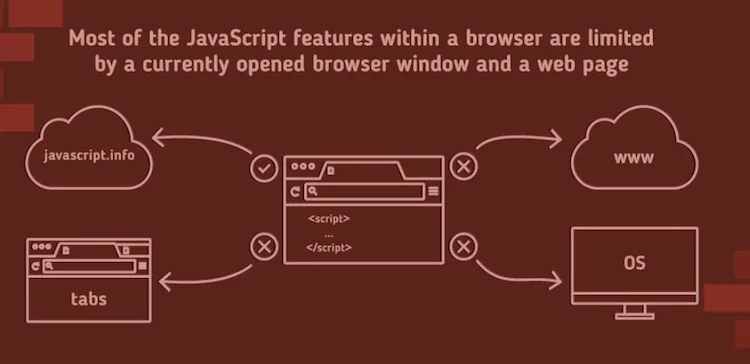
It is cool that I was able to see about code editors on your web site, take it easy man.
Visual Studio
Price: Free | $45.00 per month
Platform: Windows, macOS
This is not true, the screenshot is from “Visual studio code” and it’s totally free
PyCharm 10/10 for python and free
Do you teach online coding
Ya do you? I would really like to learn.
All mentioned tools are good but sublime text i use personally. It is awesome tool for code editing or writing.
I have read your blog and would like to add something. Eclipse is a multi-purpose IDE that is used for programming. It was initially developed by IBM and has since grown to be one of the most widely used development software. Eclipse speeds up development. It helps developers keep track of their code projects. It also offers on-demand access to a large community of developers and engineers. Thank you for sharing this blog with us.
1 notepad
4 xcode
6 aws
7 emacs
9 vim
definitely not impartial
Need to teach programming in my school how can I get these softwares
Need help
My choice is Codelobster editor.
can I be able to join the university